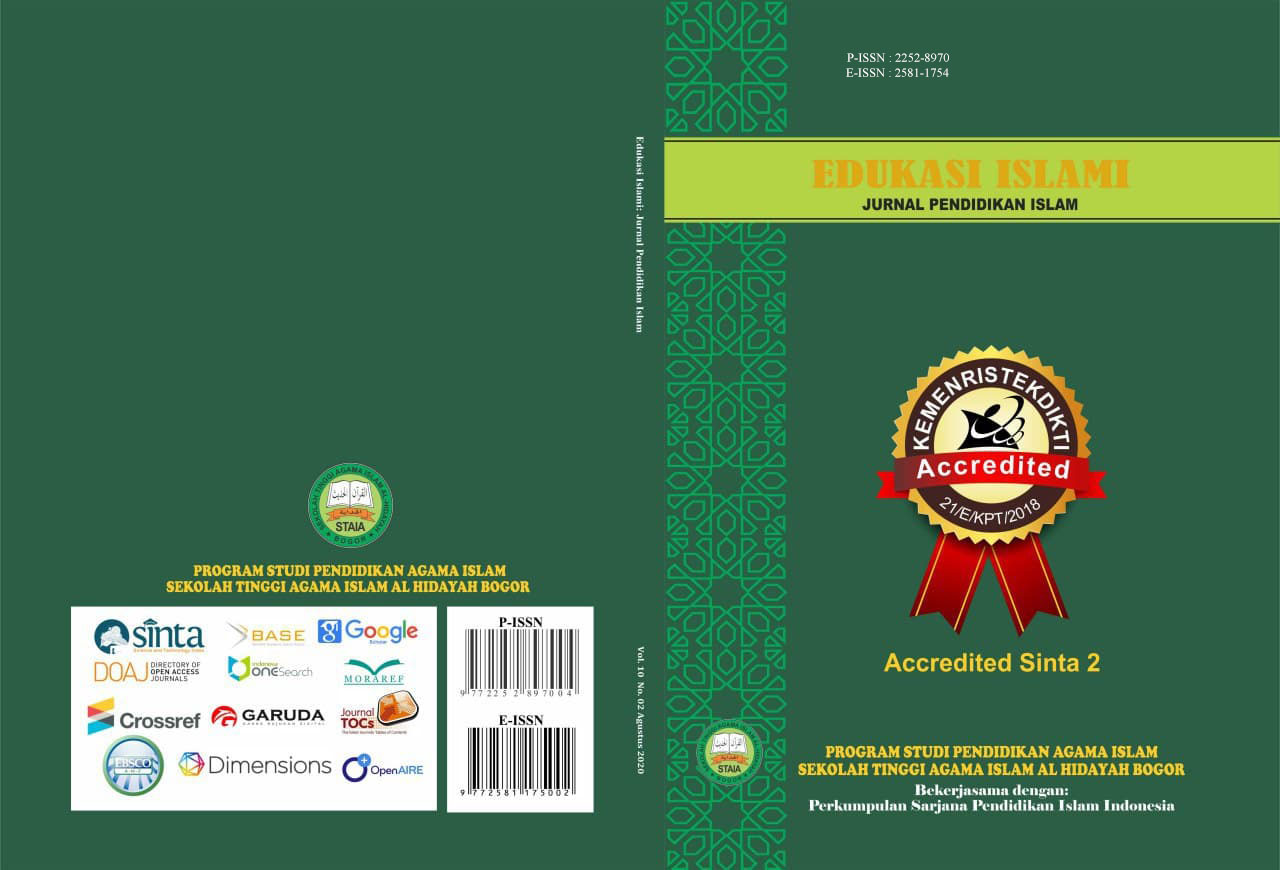Automatic Voice Recorder Designing as A Project-Based Learning Implementation To Enhance Skills In Designing Aeronautical Telecommunications Facilities
Keywords:
Aeronautical Telecommunication, Automatic Voice Recorder, Project Based LearningAbstract
References
Albado, I. A., Makhareez, L., Atyat, Z. A., Halalsheh, N. Z., & Alzboun, M. (2023). Challenges Facing Vocational Education Students in Jordan in Light of the Covid-19 Pandemic : An Empirical Study. Dirasat: Educational Sciences, 50(2), 19–30. https://doi.org/https://doi.org/10.35516/edu.v50i2 - S1.573
Almulla, M. A. (2020). The Effectiveness of the Project-Based Learning (PBL) Approach as a Way to Engage Students in Learning. SAGE Open, 10(3), 1–13. https://doi.org/10.1177/2158244020938702
Choi, S. J., Jeong, J. C., & Kim, S. N. (2019). Impact of vocational education and training on adult skills and employment: An applied multilevel analysis. International Journal of Educational Development, 66, 129–138. https://doi.org/10.1016/j.ijedudev.2018.09.007
DGCA. (2015). Manual Of Standard Part 171-02: Technical Specifications of Aeronautical Telecommunication Facilities (Vol. 175, p. 26). Directorat General of Civil Aviation - Indonesia. https://jdih.dephub.go.id/peraturan/detail?data=91TjOnHIdifLLSo6ZeZYyz4pEZAMQb1d34ubNf5pBFrl8QkzfNafFfp4DtRF00X0408Qnb1VpvIBg4uTOAJleW4Q4knxrFCTG1h8bUCN0Ux7lV9nRcZ7KB3FvDPHCVP6OynK3fadAeu1DEs0l8izfy525C
Dipak Ghael, H., Solanki, L., Sahu, G., & Professor, A. (2020). A Review Paper on Raspberry Pi and its Applications. International Journal of Advances in Engineering and Management (IJAEM), 2(12), 225–227. https://doi.org/10.35629/5252-0212225227
Fuller, A. (2015). Vocational Education. International Encyclopedia of the Social & Behavioral Sciences: Second Edition, November, 232–238. https://doi.org/10.1016/B978-0-08-097086-8.92091-9
Harris, R., & Clayton, B. (2020). The value of vocational education and training. International Journal of Training Research, 18(3), 185–190. https://doi.org/10.1080/14480220.2020.1860309
Helmy, A., Malang, P. N., Fairman, B., & Voak, A. (2021). Managing the Challenges of Vocational Education and Training in Indonesia-The Mire of Uncertainty! Journal of Education and Practice, 12(33), 21–27. https://doi.org/10.7176/jep/12-33-03
Mani, A. C. (2018). Critical Data Analysis of Flight Data Recorder for Safety of Flight. 7(04), 374–379.
Maros, M., Korenkova, M., Fila, M., Levicky, M., & Schoberova, M. (2023). Project-based learning and its effectiveness: evidence from Slovakia. Interactive Learning Environments, 31(7), 4147–4155. https://doi.org/10.1080/10494820.2021.1954036
Maydiantoro, A. (2021). Model-Model Penelitian Pengembangan (Research and Development. Repository.Lppm.Unila.Ac.Id, 10.
Megayanti, T., Busono, T., & Maknun, J. (2020). Project-based learning efficacy in vocational education: Literature review. IOP Conference Series: Materials Science and Engineering, 830. https://doi.org/10.1088/1757-899X/830/4/042075
Nayyar, A., & Puri, V. (2015). Raspberry Pi-A Small, Powerful, Cost Effective and Efficient Form Factor Computer: A Review. International Journal of Advanced Research in Computer Science and Software Engineering (IJARCSSE), 5(12), 720–737. https://www.researchgate.net/publication/305668622
Nurhidayah, I. J., Wibowo, F. C., & Astra, I. M. (2021). Project Based Learning (PjBL) learning model in science learning: Literature review. Journal of Physics: Conference Series. https://doi.org/10.1088/1742-6596/2019/1/012043
Putra, A. K. K., & Suryanegara, M. (2023). The Simulation of Very High Frequency (VHF) Voice Communications at Aeronautical Mobile Satellite (Route) Service (AMS(R)S). Jurnal E-Komtek, 7(1), 59–71. https://doi.org/https://doi.org/10.37339/e-komtek.v7i1.1168 Artikel
Republic Indonesia Ministry of Transportation. (2017). Civil Aviation Safety Regulation Part 170: Air Traffic Rules. Republic Indonesia Ministry of Transportation. https://jdih.dephub.go.id/peraturan/detail?data=6GcuOvUrW6426aSdKT754z4a8bhQfAjxb4DsAYg4Z63e8mxq8ahNg4U4EqUfeEGx7Z8LOPTqFLas48gj5jeeo7MI4uPmZ0bPm8w4ZBIeSwfUOKHLkmCCVSTPT9kH3qiFwd7H1AMrDni5eoD36bepdytQmW
Republic Indonesia Ministry of Transportation. (2021). Civil Aviation Safety Regulation Part 69: Licence, Rating, Training, dan Competency of Air Navigation Personnel. Republic Indonesia Ministry of Transportation. https://jdih.dephub.go.id/peraturan/detail?data=6Ugii3YqBZXL5BWNaAEUPj4TwR9ZRdiWT4jo50uIy1IL4pEmXTtIg8U8W8serKalvc4uXVV9ZWcLs4pBygX5KE7z4juk8cnMkWU4TvOZtLV1ve5q0VcddSE4lDMDHsvSL8XtAdeN4cRtw3cGd5X4nhEJO6
Richey, R. C., & Klein, J. D. (2014). Design and Development Research. In Handbook of Research on Educational Communications and Technology. Springer Science+Business Media. https://doi.org/10.1007/978-1-4614-3185-5
Saeed, U., Khuhro, M. A., Waqas, M., & Mirbahar, N. (2022). Comparative analysis of different Operating systems for Raspberry Pi in terms of scheduling, synchronization, and memory management. Mehran University Research Journal of Engineering and Technology, 41(3), 113–119. https://doi.org/10.22581/muet1982.2203.11
Setiyawami. (2021). Central Factors Problems in Private Vocational Schools in Indonesia. International Journal of Science and Research (IJSR), 10(2), 100–102. https://doi.org/10.21275/SR21129002529
Suharno, Pambudi, N. A., & Harjanto, B. (2020). Vocational education in Indonesia: History, development, opportunities, and challenges. Children and Youth Services Review, 115(January), 105092. https://doi.org/10.1016/j.childyouth.2020.105092
Vidovic, A., Franjic, A., Štimac, I., & Ban, M. O. (2022). The Importance of Flight Recorders in the Aircraft Accident Investigation. Transportation Research Procedia, 64(C), 183–190. https://doi.org/10.1016/j.trpro.2022.09.022
Vogel, A. P., & Morgan, A. T. (2009). Factors affecting the quality of sound recording for speech and voice analysis. International Journal of Speech-Language Pathology, 11(6), 431–437. https://doi.org/10.3109/17549500902822189
Zarman, W. (2011). Vocational education and its potential problems. International Seminar on Islamic Education. https://www.academia.edu/837806/VOCATIONAL_EDUCATION_AND_ITS_POTENTIAL_PROBLEMS
Downloads
Published
Issue
Section
Citation Check
License

This work is licensed under a Creative Commons Attribution 4.0 International License.
Authors who publish with this journal agree to the following terms:
- Authors retain copyright and grant the journal right of first publication with the work simultaneously licensed under a Creative Commons Attribution License that allows others to share the work with an acknowledgment of the work's authorship and initial publication in this journal.
- Authors are able to enter into separate, additional contractual arrangements for the non-exclusive distribution of the journal's published version of the work (e.g., post it to an institutional repository or publish it in a book), with an acknowledgment of its initial publication in this journal.
- Authors are permitted and encouraged to post their work online (e.g., in institutional repositories or on their website) prior to and during the submission process, as it can lead to productive exchanges, as well as earlier and greater citation of published work (See The Effect of Open Access).









